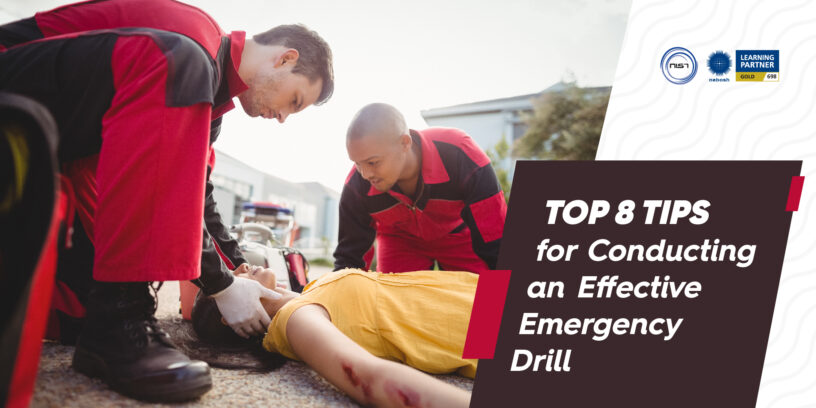One of the best ways to get your workplace ready for an emergency situation—without having to learn the hard way—is through emergency drills. Emergency Drills provide your team the chance to practise for any scenario while putting your emergency response plans to the test and revealing things you may have missed.
A good emergency drill entails more than simply sounding the alarm and directing personnel to leave the premises. Here are a few pointers to help you make your emergency exercises a success:
- Realistic and Appropriate Scenarios: The emergency drills you conduct should be appropriate for your workplace. It would be important to conduct a fire drill that covered how to evacuate using stairwells if your workplace was located in a high-rise building.
- Effective Communication: Give directions prior to, during, and following the drill. Everyone must be informed that a drill is taking place, the situation, and their roles in it. After the drill, give feedback on how
- Surprise drills: This can be more useful in preparing staff for an emergency, even though regular drills are still vital. They can assist in locating pressing issues and areas of confusion that need to be clarified.
- Include Everyone: To make sure that all employees are familiar with the emergency protocols, all employees should take part in the drill. Everyone, from senior management to part-time employees, should be included in this.
- Designated Roles: Give staff definite responsibilities, such as those of floor wardens or first aiders. This makes sure that important duties are completed and gives a sense of responsibility in people in times of crisis.
- Test a variety of scenarios: Avoid focusing only on one type of emergency. While fire drills are popular, depending on your region and the type of your organisation, it’s also crucial to practise for other scenarios like electrocution, work at height accidents, confined space rescue, medical emergency, chemical spillage, etc.
- Hold a debriefing session: Following each drill, talk about the good and bad points as well as any room for development. Consider employee feedback, as they might offer insightful suggestions.
- Refresh Emergency Plans: Refresh your emergency plans using the lessons you’ve learned from your drills. Updated evacuation routes, enhanced communication techniques, or expanded employee training are just a few examples of what this might entail.
A workplace emergency management strategy is much more crucial & complicated to create and implement. Most importantly, until a strategy is tested, you won’t know how well it works. That’s where emergency drills come in. Your emergency plans can be practised, feedback gathered, and procedures can be improved over time by running them in a disciplined manner.
You can improve the effectiveness of your emergency drills and better prepare your staff for emergencies by using the above mentioned tips in this blog.
Emergency Mock Drill @ NIST Global
Please contact our safety experts at +91 8754465588 or info@nistglobal.com if you want to run an emergency mock drill in your company.
We are NIST Global, one of the leading safety organisations in India, and we offer services such as safety training, consulting, auditing, developing the content for e-learning courses, and other safety-related activities.














Leave a Reply